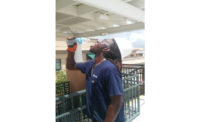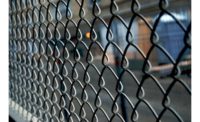According to the U.S. Bureau of Labor Statistics’ most recent Injuries, Illnesses and Fatalities Report, nearly 14,000 workplace injuries could be attributed to ice, sleet or snow. While the winter weather makes protecting workers more difficult, three easy steps from safety experts at Magid make the job easier this season. Plus, safety professionals can now take advantage of Magid’s latest free safety training for cold weather by clicking here.
Teach Workers to Walk Like a Penguin on Slick Surfaces
Beyond salting sidewalks and plowing snow, slips, trips and falls can be prevented by walking like a penguin if slick surfaces are unavoidable. Normally when we walk, our legs’ ability to support our weight is split mid-stride. Walking this way on ice forces each leg to support the weight of the body on an angle rather than perpendicular to the ice’s surface, which can result in a fall. When walking like a penguin, workers keep the center of gravity over their front leg, helping them to remain stable. Click here for a video that demonstrates this walk. While the penguin walk can be helpful in preventing slips, trips and falls, Magid safety experts also recommend offering workers a slip, trip and fall training refresh.
Educate Workers About Hypothermia
Anyone working in the cold is at risk for hypothermia, which happens when the body loses heat faster than it can produce heat. Left untreated, hypothermia can lead to heart failure, respiratory system failure and, eventually, death. The signs of hypothermia include shivering, slurred speech or mumbling, slow and shallow breathing, a weak pulse, clumsiness, confusion or memory loss, drowsiness and loss of consciousness. To prevent hypothermia, remind workers to cover up, dress in layers, stay dry and avoid activities that cause them to over-exert themselves. Learn more about hypothermia and what to do if a worker experiences hypothermia here.
Provide PPE to Help Prevent Cold Stress
Help keep workers dry and warm by providing them with water-repellent outerwear and a base layer of clothing that’s made from a moisture-wicking material. Moisture-wicking fabrics help keep workers dry by moving moisture caused by sweat to the clothing’s surface and away from the skin. Some clothing even protects against dual-hazards, such as Magid’s Dual-Hazard Duck Outerwear, which offers arc flash and flash fire protection along with protection from the cold, wind and water. Also, remember that layering is important during winter months, but be careful to avoid heavy layers that will restrict movement and prevent workers from getting the job done. For more tips, click here to learn three steps for choosing winter PPE to prevent cold stress.
To find more ways to keep the win in winter and yearlong, visit Magid’s Safety Matters Resource Center for training videos, posters, webinars, tips and more (including Magid’s latest cold weather safety training).






Report Abusive Comment